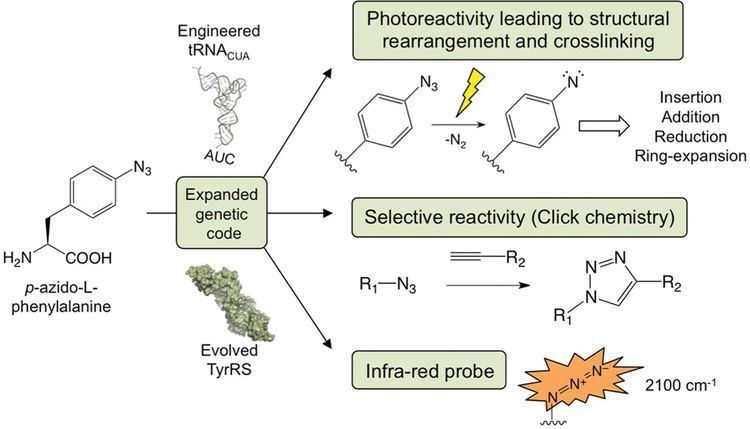Appearance Pale yellow, oily liquid | Pubchem 69319 | |
 | ||
Related compounds | ||
Phenyl azide is an organic compound with the formula C6H5N3. It is one of the prototypical organic azides. It has a pungent odor. The structure consists of a linear azide substituent bound to a phenyl group. The C−N=N angle is approximately 120°.
Contents
Preparation
Phenyl azide is prepared by the diazotization of phenylhydrazine with nitrous acid:
C6H5NHNH2 + HNO2 → C6H5N3 + 2 H2OAryl iodides bearing electron-withdrawing substituents undergo metathesis with sodium azide in the presence of Cu(I), sodium ascorbate, and N,N'-dimethylethane-1,2-diamine (DMEA):{citation needed}
RC6H4I + NaN3 → RC6H4N3 + NaIChemical reactions
C6H5N3 is used to make heterocycles via cycloaddition to alkenes and especially alkynes, particularly those bearing electronegative substituents. It reacts with triphenylphosphine to give the Staudinger reagent triphenylphosphine phenylimide (C6H5NP(C6H5)3). Thermolysis induces loss of N2 to give the highly reactive phenylnitrene C6H5N.
Phenyl azide and its analogues undergo the azide alkyne Huisgen cycloaddition, a classic example of click chemistry. For example, phenyl azide and phenylacetylene give diphenyl triazole.
Safety
Because of the potential for explosion, a protective blast shield is recommended during purification and handling. Distillation temperatures should be as low a possible. Organic Syntheses recommends a vacuum of 5mm Hg to give a boiling point of "66–68 °C/21 mm. with a bath temperature of 70–75 °C." The pure substance may be stored in the dark, cold, and even then the shelf-life is only weeks.
